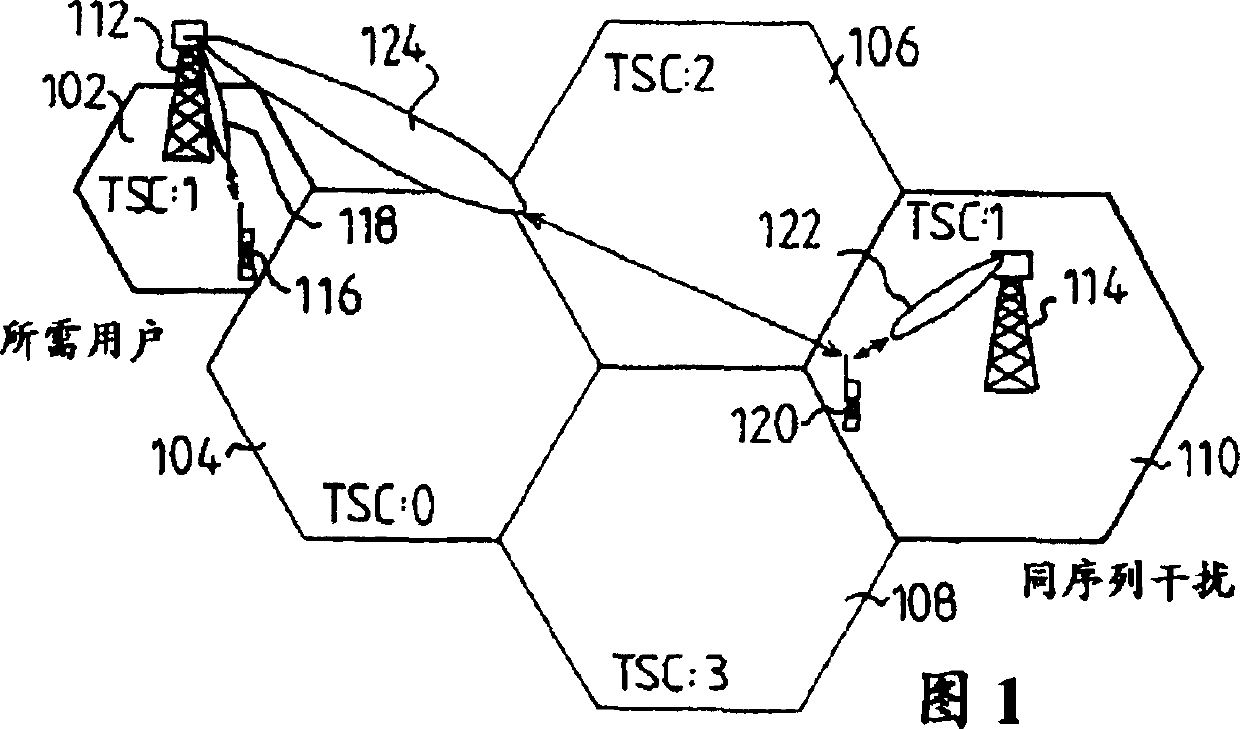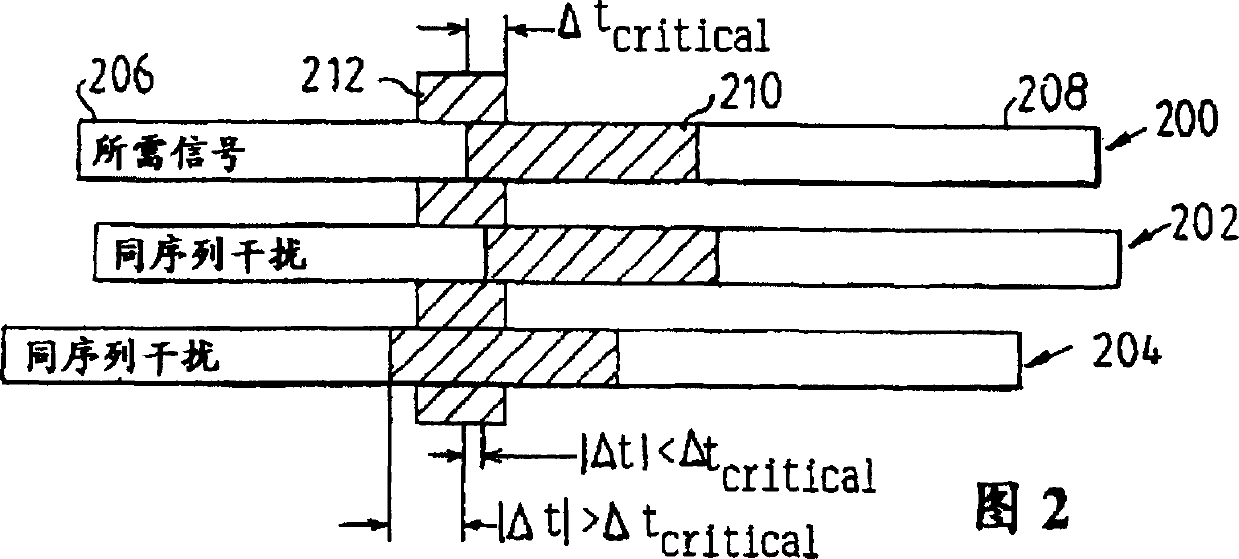Method and system in cellular network
A cellular and radio system technology, applied in the transmission system, radio transmission system, time-division multiplexing system, etc., can solve problems such as no way to distinguish contributions, achieve good quality, improve carrier-to-interference ratio C/I, and improve The effect of communication processing power
- Summary
- Abstract
- Description
- Claims
- Application Information
AI Technical Summary
Problems solved by technology
Method used
Image
Examples
Embodiment Construction
[0048] Figure 1 illustrates the beam pattern of an antenna array in a cellular TDMA network when there is strong co-sequence interference between two cells using the same frequency and the same training sequence.
[0049] More specifically, FIG. 1 illustrates the structure of a portion of a GSM network comprising five cells 102, 104, 106, 108 and 110, with cells 104, 106 and 108 separating cell 102 from cell 110. The base stations of cells 102 and 110 are indicated at 112 and 114 . Cells 102 and 110 use the same training sequence and the same frequency. Co-sequence interference may therefore occur between base stations 112 and 114, as discussed in more detail below. The training sequences used by the base stations of cells 104 , 106 and 108 are different from each other and different from the training sequences used by cells 102 and 110 .
[0050] The mobile station 116 in the cell 102 transmits a burst to the network, and the base station 112 generates a narrow beam 118 dir...
PUM
 Login to View More
Login to View More Abstract
Description
Claims
Application Information
 Login to View More
Login to View More - R&D
- Intellectual Property
- Life Sciences
- Materials
- Tech Scout
- Unparalleled Data Quality
- Higher Quality Content
- 60% Fewer Hallucinations
Browse by: Latest US Patents, China's latest patents, Technical Efficacy Thesaurus, Application Domain, Technology Topic, Popular Technical Reports.
© 2025 PatSnap. All rights reserved.Legal|Privacy policy|Modern Slavery Act Transparency Statement|Sitemap|About US| Contact US: help@patsnap.com



